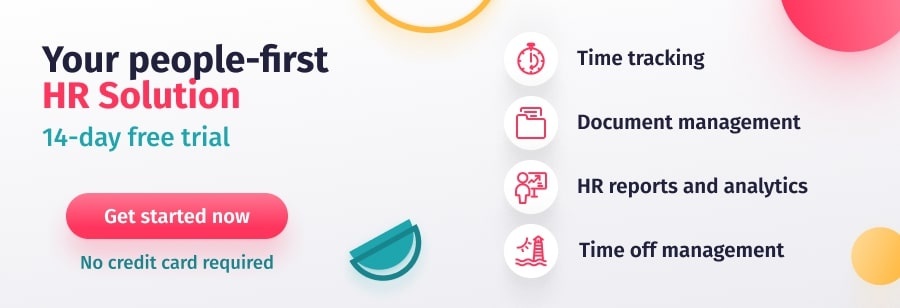Most companies are aware of the importance of promoting DEI in the workplace. This is where you implement measures to make sure your employees feel they are respected and treated fairly in an inclusive environment. However, many companies are now taking this a step further with initiatives that promote DEIB: diversity equity inclusion, and belonging.
An enhanced focus on creating a sense of belonging is important because when employees are acknowledged for their work and reminded that their work contributes to the achievement of corporate goals, they are likely to be more engaged, more motivated, and more likely to perform at a high level.
In this post, we will look at the difference between inclusion and belonging. We will also share some tips and best practices to help you put the “B” in DEIB and foster a culture of belonging in your workplace.

DEIB Meaning
DEIB stands for Diversity Equity Inclusion and Belonging. The concept is an extension of a more commonly known initiative known as DEI. DEI is based on the principles of diversity (employing people with a range of social identities), equity (creating systems that ensure equal access), and inclusion (ensuring all voices are heard).
DEIB recognizes the fact that although diversity equity and inclusion are very important in business, it is the promotion of a sense of belonging that truly enables companies to maximize opportunities for everyone.
The shift from DEI to DEIB has been highlighted as a growing trend in 2022. And this serves as a reflection of the rapid changes we have seen in society over the past few years: being diverse, equitable, and inclusive is not enough to create an environment that helps people get the best out of themselves – they also need to feel that they belong.
Cultivating a sense of trust and belonging can help you build effective working relationships that support the success of your business outcomes. Companies that strive to create a sense of belonging for all also tend to have better retention rates and higher levels of productivity. A culture of belonging and inclusivity is also a great way to boost your brand reputation and attract top talent.
Before we look at how you can promote diversity, equity, inclusion, and belonging in your business, let’s break down the difference between inclusion and belonging.
DEIB: Inclusion vs. Belonging
Inclusion and belonging are similar concepts that can often lead to confusion.
Let’s start with a few basic definitions to explain the difference between inclusion and belonging.
Diversity: Employing people with a range of social identities (political beliefs, race, culture, sexual orientation, religion, class, and/or gender identity differences).
Equity: The concept of providing fair treatment and opportunities for all.
Inclusion: Implementing systems that ensure all employees, regardless of background or social identity, feel involved, valued, respected, and treated fairly. To create an inclusive company, you need to empower all employees and encourage them to feel comfortable being themselves.
Belonging: Nurturing a sense of security so that every employee feels that they are accepted, supported, and included. Your employees feel their voice matters and you encourage them to contribute to the goals of the organization.
Put simply, the main difference between inclusion and belonging is that inclusion relates to the initiatives a company implements to promote equal opportunities for all. Belonging refers to how employees feel as a result of the company’s inclusion efforts.
To expand on a popular quote by Verna Myers:
Diversity is being invited to the party; inclusion is being asked to dance; equity is dancing without an invitation; belonging is feeling free to ask anyone you want to dance with you.
Diversity Inclusion and Belonging Training
The key to building a truly diverse workforce is implementing the right DEIB program. And this means training your employees so that they understand what workplace discrimination is and how they can promote a sense of inclusion and belonging for all.
The best place to start is with management.
Make sure your managers understand what your DEIB goals are, why they are important, and what you expect of them. They need to understand what behavior you consider disparate treatment, and how they can avoid any potential adverse impact from their actions. They then need to lead by example so that all levels of the company understand the purpose and goals of your DEIB practices.
Firstly, a good place to start with this is by offering bias training. This will help managers identify and understand any underlying prejudices, such as gender bias recruitment or issues with ageism and promotion. It will also help them understand what values they should be reflecting during their day-to-day activities, and how they can promote a culture of belonging.
The next step in your DEIB training program should be making sure all employees understand that they have a personal responsibility to uphold your standards for diversity, equity, inclusion, and belonging. Focus on fairness and transparency. Teach your employees how to identify and report any examples of conscious or unconscious bias in the workplace. Make it clear that you will not tolerate these behaviors and clarify the consequences if they break your DEIB code of conduct.
Finally, remember that managing diversity inclusion and belonging is a continuous process of improvement that each member of your organization must strive for on a daily basis.
DEIB: Advocate Diversity and Inclusion
Aside from offering your managers and employees the right DEIB training, there are a number of additional measures you can implement to promote a culture of belonging in your workplace. These will help each and every member of your organization feel uniquely seen, heard, and valued:
- Be inclusive when it comes to meetings, collaboration opportunities, and decision-making. Encourage your managers to involve their teams in important decisions that affect the department.
- Promote the concept of role models so that employees feel seen, supported, and connected. Make sure your role models represent a range of minority groups so that employees can identify with their leaders.
- Nurture diversity management in the workplace at every level of the employee life cycle. This includes diversity and inclusion recruitment practices, promotions, and training and development.
- Build diverse teams and embody your organization’s values of inclusivity at every level of your company.
- Be transparent and connect with your employees on a regular basis. Use surveys to ask them for feedback. Make sure your managers hold regular one-on-one sessions with each individual on their teams. Encourage employees to voice concerns when they crop up.
- Make sure your managers are responsive, appreciative, supportive and empowering. They are the backbone of your culture’s organization as they have the most direct contact with your employees.
- Encourage all your employees to be respectful to and supportive of their colleagues. This will help you create a culture of belonging.
- Make sure you track the right DEIB metrics to see how you are improving. Download Factorial’s free diversity metrics eBook to find out which KPIs will help you create a culture of belonging and inclusion.
Create a Culture of Belonging
Finally, the most important factor when it comes to DEIB is creating a culture of belonging. This is at the heart of diversity, equity, inclusion, and belonging. If you don’t nurture the right culture, then all your other DEIB initiatives are likely to fail.
So, how can you do this?
Firstly, you need to create a non-hostile environment where all your employees feel accepted and appreciated. Show them that you see and hear them and help them to feel empowered. Offer them equal access to opportunities and show them that you value their work. That their work directly contributes to the overall goals of the company and you appreciate them. This is a fundamental part of creating a better workforce for the future.
A culture of belonging is founded on the concept of cultural competence. This is the willingness and ability to understand, appreciate, and interact with people from other cultures or belief systems. This means offering the right training so that all employees understand how to appreciate and value different perspectives. This helps everyone feel that they belong which, in turn, helps them develop a sense of individual purpose and responsibility.
The key to creating a culture of belonging is building a sense of community for everyone. Promote transparency and involve your employees in important decisions. Ask them for feedback on a regular basis and remind them that their opinion matters. Encourage them to voice any concerns without fear of recrimination. Offer them DEIB training so that they understand the benefits of being part of a culture of belonging. Develop an open culture with good communication channels based on open dialogue and active listening.
Most importantly, remind them that creating a diverse and inclusive workplace culture is everyone’s responsibility. They are the backbone of your culture, and they belong.



